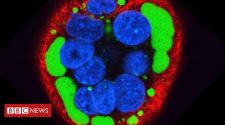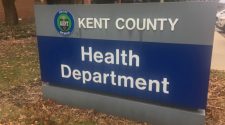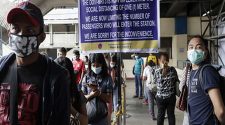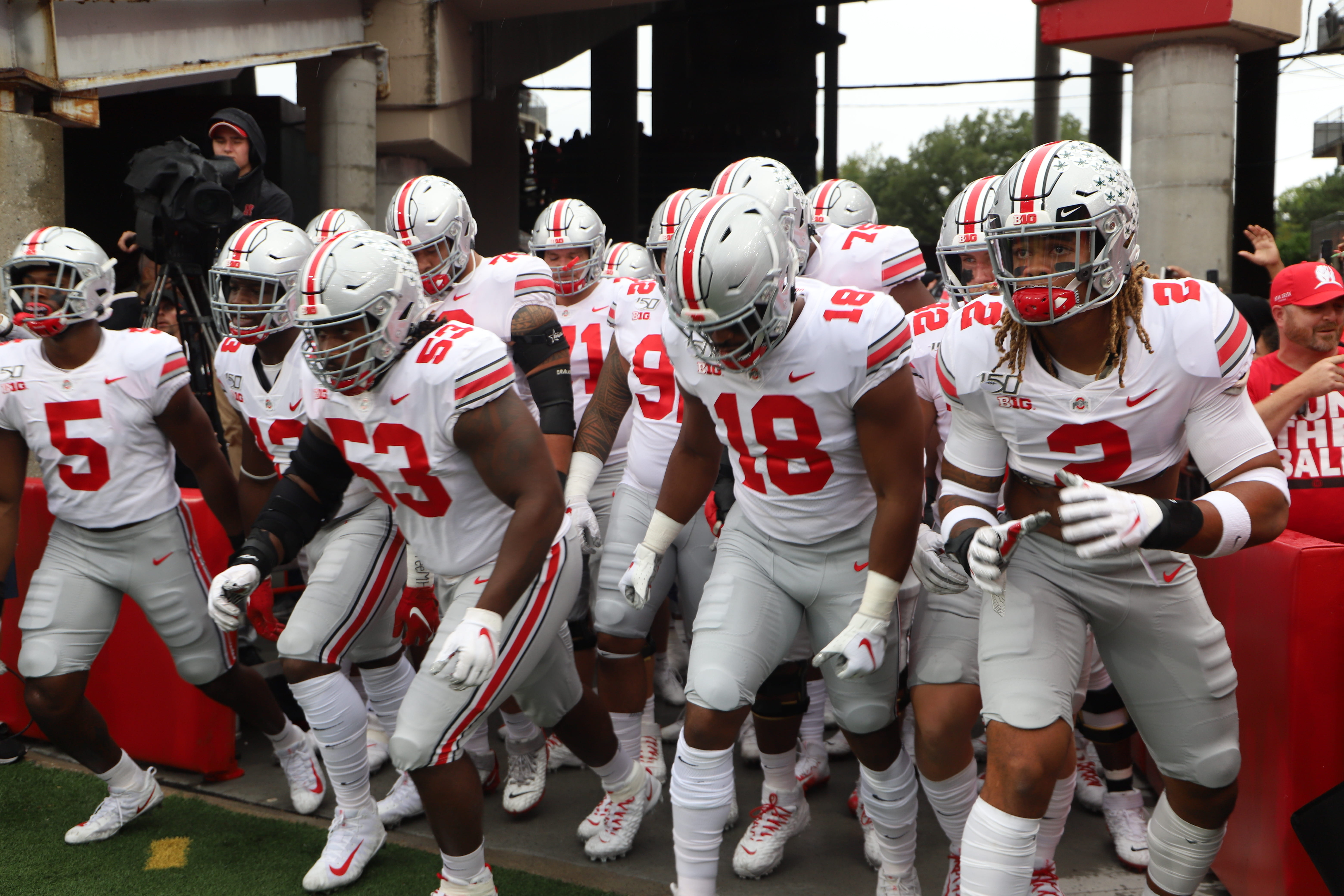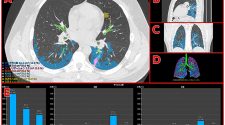The Buckeyes run onto the field for practice before the game against Nebraska at Memorial Stadium on Sept. 28. Ohio State won 48-7. Credit: Amal Saeed | Former Photo Editor
It’ll be a game of red light, green light for Big Ten teams this season.
The Big Ten’s decision Wednesday to reinstate the football season, starting Oct. 23, comes with strict health and safety guidelines, including a color code to represent infection rates in order to prevent the spread of the coronavirus. Among the most influential of the protocols is the introduction of rapid antigen testing, which aims to create a clean and safe playing field for student-athletes.
“The strategy, to be honest, is one where we’re trying to rapidly identify anyone that may have the virus and immediately remove them from their population, whether that be practice or competition,” James Borchers, Ohio State Department of Athletics head team physician, said Wednesday in a press conference.
The strategy requires all student-athletes, coaches and trainers to test six days a week — the exception being on days after games — and that results must be completed and recorded prior to the start of any games or practices.
The Big Ten will begin its daily testing campaign by Sept. 30. Borchers said that teams will continue with their current testing protocols until the Big Ten is able to provide the tests.
“That gives us over a three-week runway for this testing process,” Borchers said. “We know that, in discussions with our medical staffs, many of our institutions are going to obviously continue to follow their current testing recommendations.”
This daily antigen testing strategy played a key factor in overturning the initial postponement decision, Ohio State President Kristina M. Johnson said Wednesday.
“I think what put it over the top, and really the work over the last month, again, by the medical committee chaired by Dr. Borchers and (Penn State) athletic director Sandy Barbour, is the following, so it’s really the testing protocol,” Johnson said in a conference call. “You can guarantee a clean playing field and I think that’s our guiding principle.”
Among the other guidelines in place is a color-coded model that will indicate if it’s safe for a team to continue to practice and compete.
The color-coded model includes green, orange and red color denominations. A chief infection officer at each university will monitor data that comes from the team positivity rate based on the number of positive tests divided by total tests administered and population positivity rate, derived from the number of positive individuals out of the total at-risk population.
A team will receive a green team positivity designation if the positive test rate out of the total number of tests administered throughout a seven-day rolling average is below 2 percent, an orange designation if it is between 2 and 5 percent and a red determination if it exceeds 5 percent.
The population positivity rate thresholds are slightly higher, with a green designation of below 3.5 percent positive rate from individuals in the at-risk population based on a seven-day rolling average, orange between 3.5 and 7.5 percent and red exceeding 7.5 percent.
“For our population positivity rate, that’s the team population positivity rate,” Borchers said.
Teams will be allowed to continue normal practice and competition if they receive one green designation and a second designation of either green or orange.
Two orange rates or an orange paired with a red will force a team to proceed with caution, enhance COVID-19 protocols and consider the ability to continue with competition.
A double-red designation will force a team to stop practices and competition for at least seven days before a reassessment can occur.
On a Thursday appearance on the “Ryan Day Show” on 97.1 The Fan, Borchers said the idea behind the data-driven approach is to provide transparency.
“It’s yet to be determined, I think, how the Big Ten conference will look at that data weekly and provide reports, but the intention is certainly to be transparent and forward-facing about what each team’s situation is and to try and make certain that everyone understands what the safety parameters are about having competition in that week,” Borchers said.
Among the chief concerns of Big Ten presidents and chancellors when they decided to postpone the season was the link between COVID-19 and the heart condition myocarditis.
“When the decision was made Aug. 11 to postpone, there were concerns from the presidents and chancellors group about what they had been hearing about the potential for myocarditis,” Borchers said. “We presented a plan that out of an abundance of caution and safety, that would be how we would start with that evaluation knowing that we’ll continue to investigate it, study it and understand the best way forward.”
Myocarditis is the inflammation of the middle wall of the heart, which could lead to an irregular heartbeat and a reduction in the heart’s ability to pump blood.
The Big Ten is requiring all student-athletes to undergo a cardiac evaluation following a positive coronavirus test. Student-athletes will then need to receive clearance from a cardiologist to return to team activities. The earliest a player can return to action following a positive test is 21 days.
Along with the medical protocols, all 14 Big Ten universities will establish a cardiac registry in order to further evaluate the link between COVID-19 and myocarditis in young athletes.
With the strict guidelines in place, Borchers said that the Big Ten is ready for a return to play.
“I think for the Big Ten conference and what the questions were that we were asked to look at, we’ve charted a path forward to allow us to begin getting back to competition,” Borchers said.

